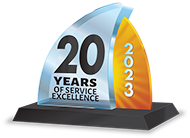Deciphering DOT: Exploring the Diverse Modes of the Department of Transportation
The Department of Transportation (DOT) in the United States serves as a vital federal agency overseeing the nation’s transportation infrastructure and systems. Established in 1966, the DOT’s primary mission is to ensure the safe, efficient, and accessible movement of people and goods across various modes of transportation, including highways, aviation, railways, maritime, and public transit. The DOT plays a multifaceted role in regulating transportation safety, enforcing compliance with federal laws and regulations, and promoting innovation and sustainability within the transportation industry.
Through its various agencies the DOT works to improve transportation infrastructure, enhance mobility for all Americans, and foster economic growth and competitiveness. Overall, the DOT’s efforts are instrumental in shaping the nation’s transportation policies, advancing safety standards, and ensuring the reliability and resilience of transportation networks essential to the nation’s economy and quality of life.
Dive into the Diverse Modes of Transportation Under the Purview of the Department of Transportation
Highways and Motor Carriers: The Department of Transportation’s jurisdiction over highways and motor carriers encompasses the regulation of interstate and intrastate transportation of goods and passengers. This includes overseeing the safety and maintenance of highways, enforcing regulations for commercial motor vehicles, and administering programs such as the Federal Motor Carrier Safety Administration (FMCSA) to ensure compliance with safety standards and regulations.
Aviation: The aviation sector falls under the oversight of the DOT, with agencies like the Federal Aviation Administration (FAA) responsible for regulating air traffic, airport operations, and aircraft safety. The DOT plays a crucial role in promoting aviation safety, facilitating air travel, and fostering innovation in aerospace technology to meet the growing demands of the industry.
Railways and Railroads: Rail transportation is another key area under the Department of Transportation’s purview, with agencies like the Federal Railroad Administration (FRA) overseeing the safety, efficiency, and development of the nation’s railroads. The DOT works to ensure the safe operation of passenger and freight rail services, implement rail infrastructure projects, and enforce regulations to prevent accidents and improve rail safety.
Maritime and Waterways: The DOT also oversees maritime transportation, including domestic and international shipping, port operations, and navigation safety. The United States Coast Guard (USCG) is responsible for a wide range of maritime safety and security missions. As a branch of the armed forces and a federal agency within the Department of Homeland Security (DHS), the USCG is tasked with enforcing maritime laws, protecting the nation’s coastlines and waterways, and ensuring maritime security.
Pipeline & Hazardous Material Safety Administration: The Pipeline and Hazardous Materials Safety Administration (PHMSA) is a vital agency within the Department of Transportation (DOT) responsible for overseeing the safe transportation of hazardous materials by pipeline, rail, road, and water. PHMSA’s primary mission is to protect people and the environment by developing and enforcing regulations for the safe handling, transportation, and storage of hazardous materials.
How Does the DOT Ensure that Federally Regulated Employees are Drug and Alcohol Free?
The Omnibus Employee Transportation Testing Act, enacted in 1991, stands as a cornerstone legislation in the realm of workplace safety, particularly within safety-sensitive industries regulated by the Department of Transportation (DOT). This act mandates drug and alcohol testing for employees in safety-sensitive positions, such as commercial drivers, pilots, and railroad workers, to ensure the integrity and reliability of transportation systems. The legislation sets forth comprehensive guidelines for drug and alcohol testing procedures, including pre-employment, random, post-accident, reasonable suspicion, and return-to-duty testing protocols. By implementing rigorous testing standards, the Omnibus Act aims to prevent accidents, injuries, and fatalities resulting from substance abuse in the workplace, ultimately promoting public safety and maintaining the efficiency and reliability of transportation networks across the nation.
Don’t Lose Your Chance at Working in a Sector Critical to the Nation’s Economic Vitality and Quality of Life
The Department of Transportation (DOT) encompasses a diverse array of transportation modes critical to the nation’s economic vitality and quality of life. From highways and aviation to railways, maritime navigation, and public transit, the DOT plays a multifaceted role in ensuring safe, efficient, and accessible transportation networks for all Americans. By understanding the various modes of transportation under the DOT’s purview, we gain insight into the complexity and importance of the nation’s transportation infrastructure and the ongoing efforts to enhance mobility, connectivity, and sustainability in the 21st century.
If you’ve failed a drug and/or alcohol test and have to complete the return to duty process, get in touch with SAP Referral Services today to get scheduled with a Substance Abuse Professional in your area quickly. SAP Referral Services has a nationwide network of qualified SAPs and employees can typically get scheduled with a SAP near them within 72-business hours. Get in touch today to get started.


